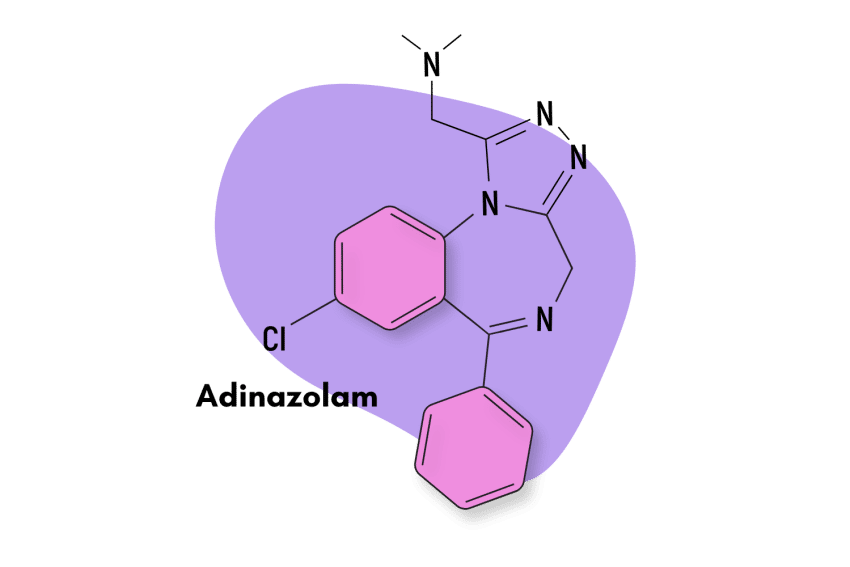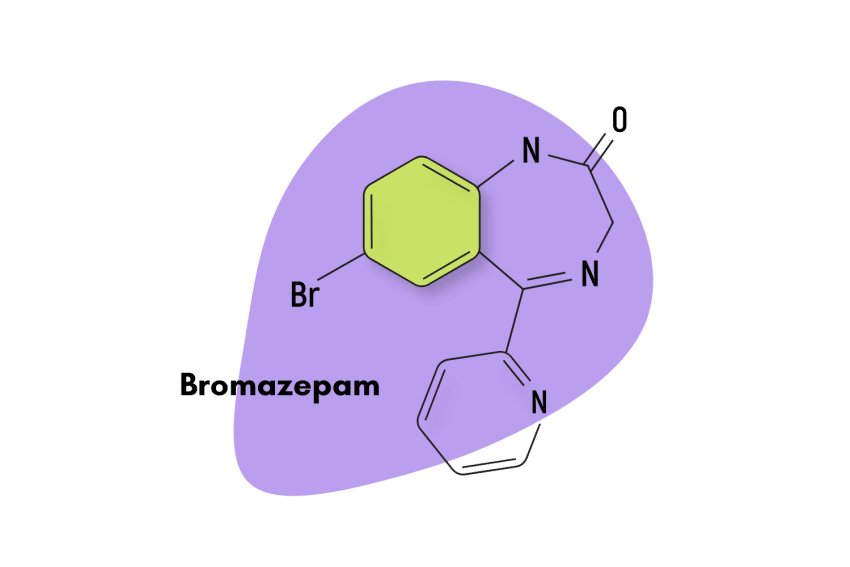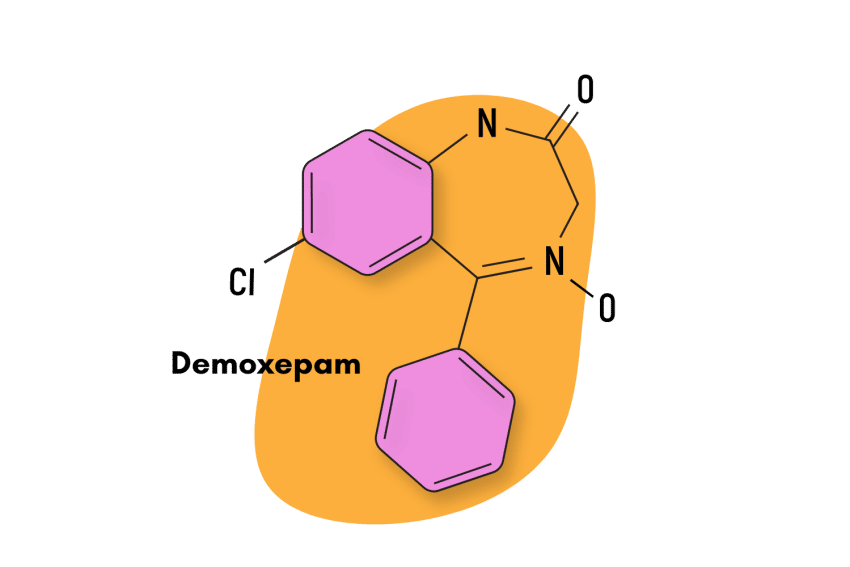Fluetizolam Fact Sheet: Dosage, Safety, & List of Natural Alternatives
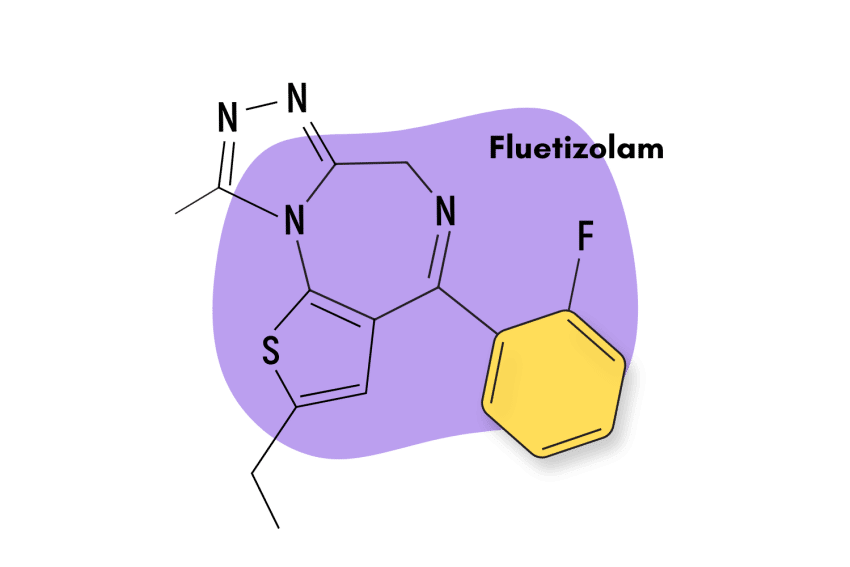
Fluetizolam is a designer drug in the benzodiazepine family of drugs. It’s closely related to drugs like diazepam (Valium), alprazolam (Xanax), and clonazolam (Klonopin).
The FDA or other regulatory agencies have not approved this compound, and there is very little research evaluating its safety and efficacy.
Despite the lack of testing, fluetizolam is widely popular within the designer drug market. It’s used for managing anxiety, insomnia, and side effects of other drugs. Some users take it for its inebriating effects, which resemble the effects of alcohol or GHB.
The main selling point for this drug that has many people seeking it out is its incredible potency. Preliminary studies on this compound suggest it to be 6 to 10 times more potent than diazepam.
Although not approved by the US Food and Drug Administration (FDA), it is currently undergoing clinical trials to explore its therapeutic uses and safety.
Fluetizolam Specs:
| Status: | Research Chemical |
| Common Dosage: | 0.5–1.0 mg |
| PubChem ID: | 12434320 |
IUPAC Name: (2-ethyl-4-(2-fluorophenyl)-9-methyl-6H-thieno[3,2-f][1,2,4]triazolo[4,3-a][1,4]diazepine
Metabolism:
Fluetizolam is extensively metabolized into an active metabolite α-hydroxyetizolam by the process of hydroxylation. The active metabolite also has an action similar to that of fluetizolam. CYP3A4 is the major cytochrome enzyme responsible for metabolism. The inactive metabolites are removed from the body through urine and feces, with the drug’s half-life ranging from 3 to 17 hours [2].
Duration of Effects:
Fluetizolam starts to work 15 to 30 minutes after the drug is consumed. The peak concentration is obtained within 30 minutes to 2 hours. The duration of its effects lasts from 5 to 7 hours.
What Is The Dose Of Fluetizolam?
The most commonly used doses of fluetizolam are either 0.5 mg or 1 mg.
This drug is much stronger than average, so it’s important to be very careful and precise when it comes to dosing.
Benzodiazepine Dosage Equivalency Calculator
**Caution:** Benzodiazepines have a narrow therapeutic window. Dose equivalents may not be accurate in higher doses.
This calculator does not substitute for clinical experience and is meant to serve only as a reference for determining oral benzodiazepine equivalence.
Please consult a medical practitioner before taking benzodiazepines.
How Does Fluetizolam Work?
Fluetizolam binds to the GABA receptors and potentiates their activity (makes them stronger). When the effects of GABA are enhanced, neurological activity is suppressed [3]. This results in feelings of calmness, reductions in anxiety levels, and sedation in higher doses.
It also results in impairments in normal cognitive function — such as troubles with memory, difficulty processing complex tasks, and speech impairments.
Benzodiazepine drugs like fluetizolam bind to a special receptor subtype on the GABA-A receptor. This receptor site is situated at the interface between alpha and gamma subunits. The binding of the drug to the alpha-1 subunit causes sedative effects, while binding to the alpha-2, and alpha-3 subunits cause anxiolytic effects. It’s unclear precisely which subtype fluetizolam has a higher affinity for. The truth is that the answer could be different for each individual — some users report a strong sedative quality to fluetizolam, while others suggest it’s less sedative than diazepam or other popular alternatives.
Some of the metabolites of fluetizolam are also active, producing similar effects but with lower potency overall.

Is Fluetizolam Safe? Risks & Side Effects
Although the pharmacological profile of the drug is similar to other benzodiazepines, the side effects of the drug have not been studied properly.
With that said, it’s likely this drug shares similar side effects and risks as most of the other members of this group. The main concern with using these drugs is interaction with other compounds — especially sedatives or central nervous system depressants like alcohol, GHB, phenibut, barbiturates, or opiates.
The other concern is the risk of becoming dependent on the drug. This is more common than you might think with benzos, especially very strong compounds like fluetizolam. Once dependency is formed, it becomes substantially harder to quit using the drug. Whenever the effects wear off, users experience a significant spike in anxiety levels and may find it extra hard to get to sleep. These withdrawal symptoms are often enough to force the user to take another dose, and the cycle repeats.
Fluetizolam is considered higher than average risk for two main reasons:
- Fluetizolam is much stronger than most benzos — side effects, overdose, and dependency are all more likely with potent drugs such as this.
- Fluetizolam hasn’t been approved — this means you can only buy fluetizolam from unregulated vendors. Adulteration and contamination are serious concerns with these unofficial vendors.

Common Side Effects of Fluetizolam
Without proper testing, the exact side effects profile of fluetizolam is unclear. However, fluetizolam works through the same mechanisms as drugs like diazepam or alprazolam and likely shares similar side effects.
The most common side effects of benzodiazepines, in general, are drowsiness and muscle weakness. Serious side effects are rare when these drugs are used responsibly.
Common side effects of benzodiazepines include:
- Breathing problems
- Drowsiness
- Fainting
- Headache
- Loss of libido
- Low mood
- Muscle weakness & incoordination
- Sedation
- Tremor
- Visual Disturbances
Rare but serious side effects of benzodiazepines include:
- Anaphylaxis
- Breathing difficulty
- Confusion and memory problems
- Depression and suicidal thoughts
- Edema (swelling of the limbs)
- Hallucinations and delusions
- Jaundice or other signs of liver injury
Harm Reduction: Fluetizolam
Fluetizolam isn’t approved by the FDA for therapeutic use. This carries some extra risk with it on top of the usual concerns with the benzodiazepine class as a whole.
The main concern with unapproved medications is that vendors selling these drugs are often unscrupulous. Adulteration, contamination, and poor quality control overall are serious concerns.
The exceptionally high potency of this substance also carries greater risk. At just 0.5 to 1 mg doses, even just a tiny bit too much can lead to serious consequences with this drug — especially when mixed with other drugs or alcohol.
Check out our benzodiazepine harm reduction guide to stay safe when using fluetizolam or related benzodiazepines:
- 🥣 Don’t mix — Mixing benzodiazepines with other depressants (alcohol, GHB, phenibut, barbiturates, opiates) can be fatal.
- ⏳ Take frequent breaks or plan for a short treatment span — Benzodiazepines can form dependence quickly, so it’s important to stop using the drug periodically.
- 🥄 Always stick to the proper dose — The dosage of benzos can vary substantially. Some drugs require 20 or 30 mg; others can be fatal in doses as low as 3 mg.
- 💊 Be aware of contraindications — Benzodiazepines are significantly more dangerous in older people or those with certain medical conditions.
- 🧪 Test your drugs — If ordering benzos from unregistered vendors (online or street vendors), order a benzo test kit to ensure your pills contain what you think they do.
- 💉 Never snort or inject benzos — Not only does this provide no advantage, but it’s also extremely dangerous. Benzos should be taken orally.
- 🌧 Recognize the signs of addiction — Early warning signs are feeling like you’re not “yourself” without the drug or hiding your habits from loved ones.
- ⚖️ Understand the laws where you live — In most parts of the world, benzodiazepines are only considered legal if given a prescription by a medical doctor.
- 📞 Know where to go if you need help — Help is available for benzodiazepine addiction; you just have to ask for it. Look up “addiction hotline” for more information where you live. (USA: 1-800-662-4357; Canada: 1-866-585-0445; UK: 0300-999-1212).
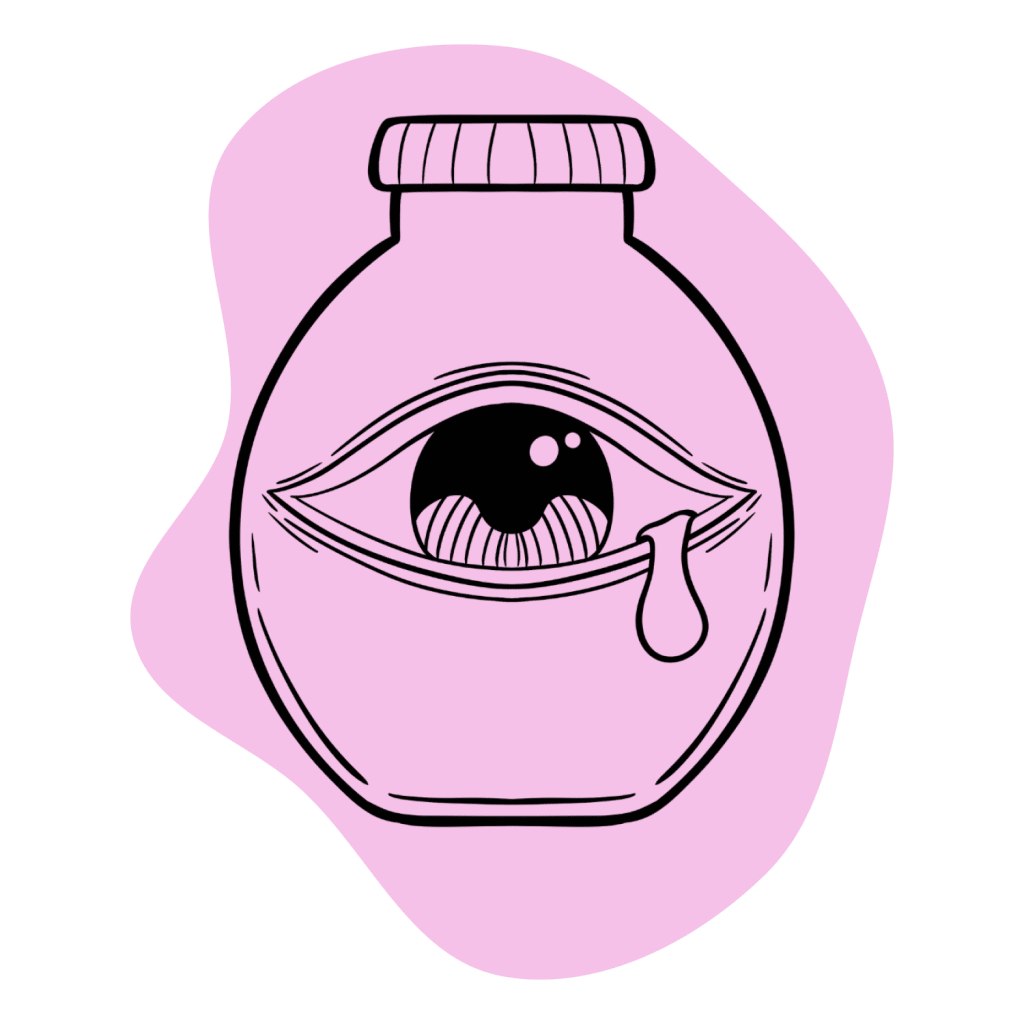
Reducing The Risk Of Dependence
All benzodiazepines carry some risk of dependency and withdrawal. This makes quitting the drug substantially more difficult the longer you take it.
Fluetizolam is especially susceptible because of its short duration (prompting frequent redosing) and very high potency (results in faster adaptation and dependence among GABA receptors).
The best way to avoid drug dependence is moderation. Take frequent breaks from fluetizolam and avoid redosing at the first sign of symptoms. It’s wise to avoid using fluetizolam for more than two weeks at a time without at least 2 or 3 weeks break in between.
Avoid Certain Medications While Taking Fluetizolam
Certain drugs like alcohol and sedatives such as opioids, antihistamines, and barbiturates can exacerbate the sedative side effects of fluetizolam. The risk of overdosing increases substantially when mixing benzos with other central nervous system depressants — especially alcohol or GHB. Overdoses can be fatal.
Some medications can affect the metabolism of fluetizolam, such as antibiotics, anti-convulsants, antifungals, and antitubercular drugs. The drugs can either increase the toxicity of fluetizolam or reduce its effectiveness, depending on their effect on the cytochrome enzyme.
Fluetizolam Contraindications
A contraindication refers to situations where people are at an increased level of risk for overdose when using a given drug. Doctors will weigh your individual level or risk based on these known contraindications.
Contraindications for fluetizolam include:
- Acute angle closure glaucoma
- Chronic liver disease
- Chronic kidney disease
- Chronic lung disease
- pregnancy, breastfeeding or planning to become pregnant
- You are undergoing any surgeries
- If you have any kind of psychiatric condition or suicidal thoughts

Similar Benzodiazepine Alternatives
Fluetizolam is classified as a thienodiazepine derivative with a short duration of effects. Other compounds that fall under this classification include brotizolam (Lendormin), clotiazepam, etizolam (Etilaam), and metizolam.
Other members of the thienodiazepine class include ciclotizolam, deschloroetizolam, flubrotizolam, and fluclotizolam.
The effects of fluetizolam are very similar to other benzodiazepine derivatives, even those classified a little bit differently.
The most common benzodiazepines used today include alprazolam (Xanax), bromazepam, diazepam (Valium), chlordiazepoxide (Librium), lorazepam (Ativan), and clonazepam (Klonopin).
Fluetizolam vs. Common Short to Intermediate-Acting Benzodiazepines [3,4]:
| Fluetizolam | Alprazolam | Bromazepam | Diazepam | Chlordiazepoxide | |
| Chemical composition: | Oxazolobenzodiazepine | Triazolobenzodiazepine | 1,4-benzodiazepine | 1,4-benzodiazepine | 1,4-benzodiazepine |
| Route of administration: | Oral | Oral | Oral | IV, IM | Oral, IV |
| Onset of action: | 15 to 30 minutes. | 20 to 60 minutes. | 60 minutes | 15 to 60 minutes. | 1 to 2 hours (oral) |
| Peak concentration: | 30 minutes to 2 hours. | 1 to 2 hours. | 1 to 4 hours. | 1 to 1.5 hours. | 2 hours |
| Duration of effects: | Short-acting (5 to 7 hours) | Short-acting (6 to 27 hours) | Intermediate-acting (8 to 19 hours) | Long-acting (20 to 80 hours) | Long-acting (36 to 200 hours) |
| Mechanism of action: | GABA-A receptor agonist | GABA-A receptor agonist | GABA-A receptor agonist | GABA-A receptor agonist | GABA-A receptor agonist |
| Medical Uses: | Anxiety, muscle spasms, sleep disorders, seizures | Panic disorders, anxiety disorders, insomnia | Anxiety disorder, alcohol withdrawal | Seizures, alcohol withdrawal, insomnia, muscle spasms, panic disorder, anxiety disorders | Panic disorders, alcohol withdrawal, anxiety disorders |
Natural Alternatives To Fluetizolam
There are a few natural alternatives that cause relaxation and sedation, like those of fluetizolam. Of course, no herb is going to offer the same level of potency as a synthetic drug. However, these plants also carry far less risk for things like addiction, overdose, or cognitive degeneration.
Many people find natural substances offer enough support to avoid using fluetizolam or other benzodiazepines in the first place.
1. Passionflower
When compared to the benzodiazepine oxazepam, a study found passion flower extracts to be equally effective for the treatment of anxiety while producing substantially lower risk in terms of side effects [5].
2. Kava
The kava plant (Piper methysticum) is traditionally used across the islands of the Pacific Ocean as a sedative, mildly euphoric, and social lubricant. Many of the active ingredients (called kavalactones) share similar effects to benzodiazepines on the GABA receptors — albeit to a much milder extent.
Kava is weaker than prescription benzodiazepines, but it’s also significantly less addictive.
A meta-analysis revealed that kava is efficient at treating anxiety, with only minor side effects like headache, drowsiness, and diarrhea being reported [6].
5. Chamomile Tea
Traditional chamomile tea, made from chamomile flowers, is becoming more and more well-liked for its calming effects and other health advantages. The tea is thought to function by attaching to the benzodiazepine receptor and boosting GABA activity [7].
6. Valerian Root
By increasing the amount of GABA in the brain, valerian root has a calming effect very similar to benzodiazepines [8]. Many herbalists lovingly refer to this plant as the “benzodiazepine of the plant world.”
7. Psychobiotics
Food items called “psychobiotics” contain bacteria that are good for treating or preventing mental health issues. Two typical bacteria that produce GABA include Lactobacillus brevis and Bifidobacterium dentium [9].
It can take a while before you start noticing any of the effects of psychobiotics, but once they start appearing, they tend to remain in place much longer than benzodiazepines, even after you stop taking them.

Fluetizolam FAQs
Is fluetizolam approved for therapeutic use?
Fluetizolam is not approved by the FDA for clinical use. However, it is not classified as a scheduled drug and is available online for use for research purposes only.
How does fluetizolam differ from other benzodiazepines?
Fluetizolam is a thienodiazepine derivative in which the benzene ring of benzodiazepines is replaced by the thiophene ring. Studies have shown that the tolerance associated with a benzodiazepine is less with fluetizolam. So it’s more useful for long-term use.
Are there any foods to avoid while taking fluetizolam?
Alcohol should be avoided when taking fluetizolam because it can dramatically increase the risk of overdosing on both substances. Alcohol and benzodiazepines share a similar mechanism of action and can produce significant side effects when combined.
Similarly, while taking fluetizolam, one should refrain from eating or drinking anything that contains caffeine or other stimulating compounds.
Can I take fluetizolam if I am taking other benzodiazepines?
You should not take fluetizolam if you are taking benzodiazepines. This is because they have a similar mechanism of action. Therefore taking them together may increase the risk of serious side effects.
References
- Kitajima, H., Ehara, S., Sato, H., Moriwaki, M., & Onishi, K. (1998). US Patent No. 5,760,032. Washington, DC: US Patent and Trademark Office.
- Catalani, V., Botha, M., Corkery, J. M., Guirguis, A., Vento, A., Scherbaum, N., & Schifano, F. (2021). The psychonauts’ benzodiazepines; quantitative structure-activity relationship (Qsar) analysis and docking prediction of their biological activity. Pharmaceuticals, 14(8), 720.
- Sanna, E., Pau, D., Tuveri, F., Massa, F., Maciocco, E., Acquas, C., … & Biggio, G. (1999). Molecular and neurochemical evaluation of the effects of etizolam on GABAA receptors under normal and stress conditions. Arzneimittelforschung, 49(02), 88-95.
- Griffin, C. E., Kaye, A. M., Bueno, F. R., & Kaye, A. D. (2013). Benzodiazepine pharmacology and central nervous system–mediated effects. Ochsner Journal, 13(2), 214-223.
- Akhondzadeh, S., Naghavi, H. R., Vazirian, M., Shayeganpour, A., Rashidi, H., & Khani, M. (2001). Passionflower in the treatment of generalized anxiety: A pilot double‐blind, randomized controlled trial with oxazepam. Journal of clinical pharmacy and therapeutics, 26(5), 363-367.
- Pittler, M. H., & Ernst, E. (2003). Kava extract versus placebo for treating anxiety. Cochrane Database of Systematic Reviews, (1).
- Mao, J. J., Li, Q. S., Soeller, I., Rockwell, K., Xie, S. X., & Amsterdam, J. D. (2014). Long-term chamomile therapy of generalized anxiety disorder: A study protocol for a randomized, double-blind, placebo-controlled trial. Journal of clinical trials, 4(5).
- Shinjyo, N., Waddell, G., & Green, J. (2020). Valerian root in treating sleep problems and associated disorders—A systematic review and meta-analysis. Journal of Evidence-Based Integrative Medicine, 25, 2515690X20967323.
- Perez-Burgos A, Wang B, Mao YK, Mistry B, McVey Neufeld KA, Bienenstock J, Kunze W. Psychoactive bacteria Lactobacillus rhamnosus (JB-1) elicits rapid frequency facilitation in vagal afferents. Am J Physiol Gastrointest Liver Physiol. 2013 Jan 15;304(2):G211-20. DOI: 10.1152/ajpgi.00128.2012. Epub 2012 Nov 8. PMID: 23139216.

